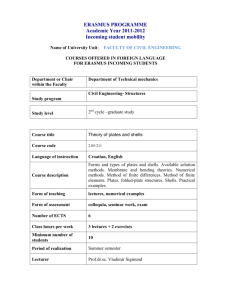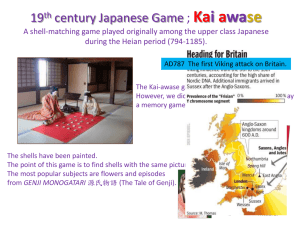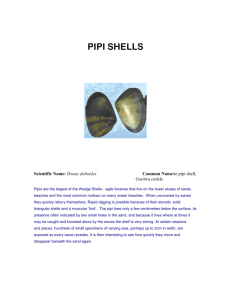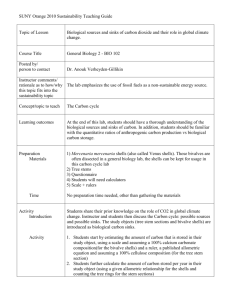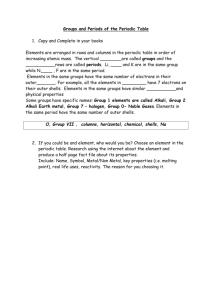Sorting shells (draft) - Ball State University
advertisement
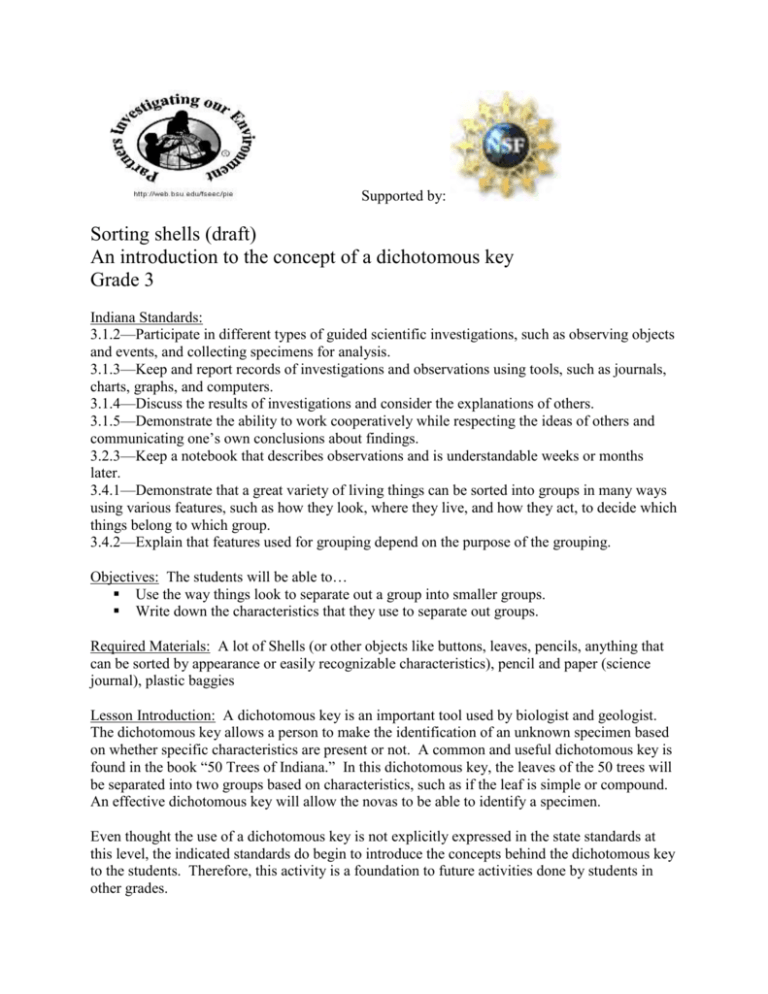
Supported by: Sorting shells (draft) An introduction to the concept of a dichotomous key Grade 3 Indiana Standards: 3.1.2—Participate in different types of guided scientific investigations, such as observing objects and events, and collecting specimens for analysis. 3.1.3—Keep and report records of investigations and observations using tools, such as journals, charts, graphs, and computers. 3.1.4—Discuss the results of investigations and consider the explanations of others. 3.1.5—Demonstrate the ability to work cooperatively while respecting the ideas of others and communicating one’s own conclusions about findings. 3.2.3—Keep a notebook that describes observations and is understandable weeks or months later. 3.4.1—Demonstrate that a great variety of living things can be sorted into groups in many ways using various features, such as how they look, where they live, and how they act, to decide which things belong to which group. 3.4.2—Explain that features used for grouping depend on the purpose of the grouping. Objectives: The students will be able to… Use the way things look to separate out a group into smaller groups. Write down the characteristics that they use to separate out groups. Required Materials: A lot of Shells (or other objects like buttons, leaves, pencils, anything that can be sorted by appearance or easily recognizable characteristics), pencil and paper (science journal), plastic baggies Lesson Introduction: A dichotomous key is an important tool used by biologist and geologist. The dichotomous key allows a person to make the identification of an unknown specimen based on whether specific characteristics are present or not. A common and useful dichotomous key is found in the book “50 Trees of Indiana.” In this dichotomous key, the leaves of the 50 trees will be separated into two groups based on characteristics, such as if the leaf is simple or compound. An effective dichotomous key will allow the novas to be able to identify a specimen. Even thought the use of a dichotomous key is not explicitly expressed in the state standards at this level, the indicated standards do begin to introduce the concepts behind the dichotomous key to the students. Therefore, this activity is a foundation to future activities done by students in other grades. Procedures: 1. It is recommended that this activity be done with simpler objects such as colored shapes first using the instruction below and then doing the activity again with shells. The following instructions are for the shells only, but should be similar to those of simpler objects chosen first. 2. Before the start of the lesson, create baggies of different shells where some have similar characteristics and other do not. 3. Divide the students into pairs. 4. Give each pair a set of shells. 5. Ask the students to spread their shells out so they can see them. 6. Tell them to look at the shells carefully and decide on a characteristic that will split the shells into two groups. Let the students know that the groups do not have to have the same number of shells. Have the students explain in their journals what they did and why. 7. Split the groups in half again based on characteristics. Record the splits in the journal. 8. Continue until each shell can be described by its own set of characteristics. (Until each one is in a group of its own) 9. Now have two pairs join together and do the same thing with the 20 shells that they have. 10. Ask the students what some of the characteristics that they used were. Discuss in class. Did both groups use the same method to separate out the shells? 11. Hold up some leaves and have a student make a suggestion on how to split them into groups. Continue until the leaves are individualized. Closure: Have the students make crayon rubbings of their favorite shell. Then, have the students write a story about their favorite shell and the characteristics that the shell has. Assessment: The teacher will… Observe the students during the activity. Ask the students questions and solicit responses to those questions. Check science journals for accuracy and completeness. Grade the students writing looking for the students to describe the characteristics of the shells. Extensions: The students can be taken to a park and collect leaves (being careful of poison ivy, etc.) and make their own dichotomous key for the different leaves they found. Written By: Dustan Smith, PIE Fellow, Ball State University


